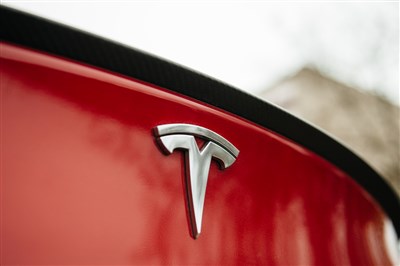
If the news out of Tesla (NASDAQ:TSLA) had seemed a little underwhelming lately, here's a big shock to the system that not only sent the share price blasting upward in premarket trading but also left a raft of astonished analysts in its wake. Tesla broke another record in shipping with its latest quarter, demonstrating there's still brisk demand for Tesla in the electric vehicle market.
Another Quarter, Another Broken Record
Analysts weren't exactly offering conservative estimates for Tesla's shipping plans this quarter; FactSet consensus analysis was looking for the company to ship about 168,000 vehicles total for the quarter, and Tesla quietly stepped in to handily blow out those numbers. Tesla shipped 184,000 vehicles for the first quarter of 2021. This not only beats the last quarter's numbers handily, but it also beats the record set in the fourth quarter of 2019, which was a reported 180,570 deliveries made.
The company had previously broken a record for delivered product back in the third quarter of 2020, reports noted, with deliveries managing to hit 139,300 for the quarter. Model 3 and Model Y cars led the way, with 161,650 units delivered. Interestingly, the company managed to produce 163,660 Model 3 and Model Y cars, leaving a small surplus behind. The story was different for its production and delivery of Model S and Model X vehicles; the company product 16,097 of these, yet delivered 18,920 total, reports noted, suggesting the company had to dip into previous surpluses to cover shipments.
Broken Records Drawing Analyst Attention
Despite several broken records for shipping, the broader analyst pool—as revealed by our latest research—is still calling for caution.
The company currently carries a consensus rating of “hold”, a rating it's carried for the last two years and then some, reports note. The ratios making up that “hold”, however, have changed fairly routinely in that time frame. A year ago, for example, the company had 10 “buy” ratings, 14 “hold” and 10 “sell” to its credit, making up that consensus “hold.” Six months ago, though, it had shifted to eight “buy”, 13 “hold” and 12 “sell.” Three months ago, it shifted still further to seven “buy”, 12 “hold” and 13 “sell.” Now, it's come back around to much more bullish with 10 “buy”, 12 “hold” and 12 “sell.”
The price target, meanwhile, is currently running around an average of $355.93, with the current high calling for $788 and the current low looking for $114. Given Tesla's current share price of $703.81 as of this writing—it's well off Thursday's close of $661.75—that's either looking for a lot of downside or not much updating in recent weeks. In fact, just in the last two days, Wedbush upgraded the stock from “neutral” to “outperform,” Mizuho maintained a “buy” rating with a price target of $775 per share, and JPMorgan Chase upgraded its price target from $135 to $155, which seems oddly conservative given the company's current share price.
Breaking Records Only Goes for So Long
There's no doubt that Tesla is doing fantastically right now. When any company is continually breaking records for shipments—and by extension, sales—it's hard to fault that company for pretty much anything. Something is clearly working at Tesla and the company is pumping out cars left, right and center, and getting them in the hands of customers who were happy to write checks therein.
Expecting this level of performance to continue, however, may be a lost cause. Record-breaking sales and shipment reports cannot happen forever. There always comes a point where the market is saturated and everyone who wants a Tesla—or whatever else is being produced—has one. Sure, there are repeat sales to consider, as some look to upgrade a current model or a current model ages itself past the point of useful return, but Tesla is so new to the market that these cycles may not have much impact, especially in the short term.
Give Tesla credit, though; it's working to expand its product line and deliver new value for shareholders. We know from previous reports that Tesla's work in batteries has proven quite impressive so far, and it's delivering a whole new utility. Reports from just a couple weeks back—in the wake of the Texas power outages—are especially exciting; Tesla recently installed the “world's largest battery” out at the Hornsdale Power Reserve, which can store up to 100 megawatts of power. That's actually a match for what Tesla has done at a project near Houston.
While such systems will probably remain out of range for the pocketbooks of household users, power companies may want to consider such a move. The biggest impediment to solar and wind power systems is their reliability; solar doesn't produce on a cloudy day, and people still need electricity when the sun goes down. While Tesla's vehicle shipment plans are definitely noteworthy, they're going to need a follow-up act in fairly rapid fashion once the electric vehicle market approaches a saturation point. Given the bulk of Tesla's competition here, from companies like General Motors (NYSE:GM) to Nio (NYSE:NIO), that point could hit sooner than anyone saw coming. Having a plan B—possibly for “battery”—ready in the wings would make Tesla a much more attractive proposition.
Companies in This Article: